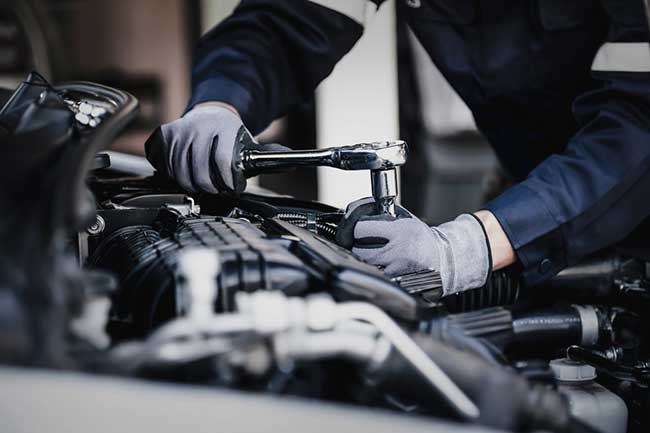All Categories
Featured
Your automobile's shock absorber is an essential part that enhances your driving experience by offering stability, convenience, and control. With time, wear and tear on this system can jeopardize your automobile's security and efficiency. By embracing correct maintenance practices, you can extend the life of your suspension and avoid expensive fixings. Right here's a step-by-step guide to maintaining your shock absorber in outstanding form.
![]()
Dripping Liquid: Oil around the shocks or struts shows they might need replacement. Harmed Springs: Cracks or breaks in the springtimes can create irregular automobile elevation. Rust or Deterioration: Steel elements like control arms and bushings are at risk to rust with time. If you notice any type of abnormalities, have your shock absorber inspected by a professional auto mechanic.
Keep tires pumped up to the recommended pressure. Rotate tires every 5,000 to 7,500 miles. Equilibrium and straighten wheels yearly or after striking splits or aesthetics. Uneven tire wear is a typical indication of suspension misalignment or worn components.
![]()
Verdict. Appropriate upkeep of your suspension system is vital for making certain a risk-free and comfortable driving experience. By carrying out normal assessments, changing worn parts, maintaining tire care, and driving responsibly, you can maintain your suspension in peak problem. Aggressive care not just prevents pricey repairs however additionally ensures your car's durability and security for every trip.
- Recognize the Relevance of the Suspension System. The shock absorber takes in shocks from uneven roads, supports the car's weight, and maintains the tires strongly touching the roadway. It consists of shocks, shows off, springs, control arms, and bushings, all of which collaborate to guarantee a stable and smooth trip. Identifying its relevance is the initial step towards appropriate treatment.
- Conduct Normal Visual Assessments. Frequent visual checks can assist recognize potential concerns early. Look for:

Dripping Liquid: Oil around the shocks or struts shows they might need replacement. Harmed Springs: Cracks or breaks in the springtimes can create irregular automobile elevation. Rust or Deterioration: Steel elements like control arms and bushings are at risk to rust with time. If you notice any type of abnormalities, have your shock absorber inspected by a professional auto mechanic.
- Address Unusual Noises and Signs And Symptoms. Unusual sounds, such as creaking, squeaking, or clunking, frequently signal suspension concerns. Similarly, a bouncy experience, difficulty steering, or the car drawing to one side shows that a suspension part could require attention. Do not neglect these signs; very early discovery can avoid further damage.
- Maintain Proper Tire Care. Tires and suspension collaborate to provide a smooth ride. To lower anxiety on your shock absorber:
Keep tires pumped up to the recommended pressure. Rotate tires every 5,000 to 7,500 miles. Equilibrium and straighten wheels yearly or after striking splits or aesthetics. Uneven tire wear is a typical indication of suspension misalignment or worn components.
- Change Worn-Out Components in a timely manner. Suspension parts like shocks, struts, and bushings break gradually. Makers normally advise replacing shocks and struts every 50,000 to 100,000 miles, depending upon driving conditions. Delaying replacement can jeopardize handling, safety and security, and overall lorry efficiency.

- Prevent Overloading Your Vehicle. Exceeding your lorry's weight capability puts too much strain on the shock absorber. This can bring about faster tear and wear on parts like springtimes and shocks. Constantly check your owner's handbook for weight restrictions and avoid overloading.
- Drive Responsibly. Hostile driving habits, such as speeding up over pockets, taking corners too quickly, or regularly driving on harsh roadways, can damage your suspension. Practice careful driving to lessen wear and prolong the lifespan of your shock absorber.
- Schedule Specialist Inspections. Regular specialist inspections are necessary for recognizing surprise issues and making certain optimal performance. Technicians can identify problems that aren't visible during a do it yourself check, such as used round joints or control arm damage.
Verdict. Appropriate upkeep of your suspension system is vital for making certain a risk-free and comfortable driving experience. By carrying out normal assessments, changing worn parts, maintaining tire care, and driving responsibly, you can maintain your suspension in peak problem. Aggressive care not just prevents pricey repairs however additionally ensures your car's durability and security for every trip.
Latest Posts
Living Area Furniture Styles
Published Jan 07, 25
0 min read
From Beginning To End: How We Provide Perfect Floor Covering Installations
Published Jan 07, 25
1 min read
When to Consider Upgrading Your Vehicle's Parts and Add-on, #.
Published Jan 07, 25
0 min read